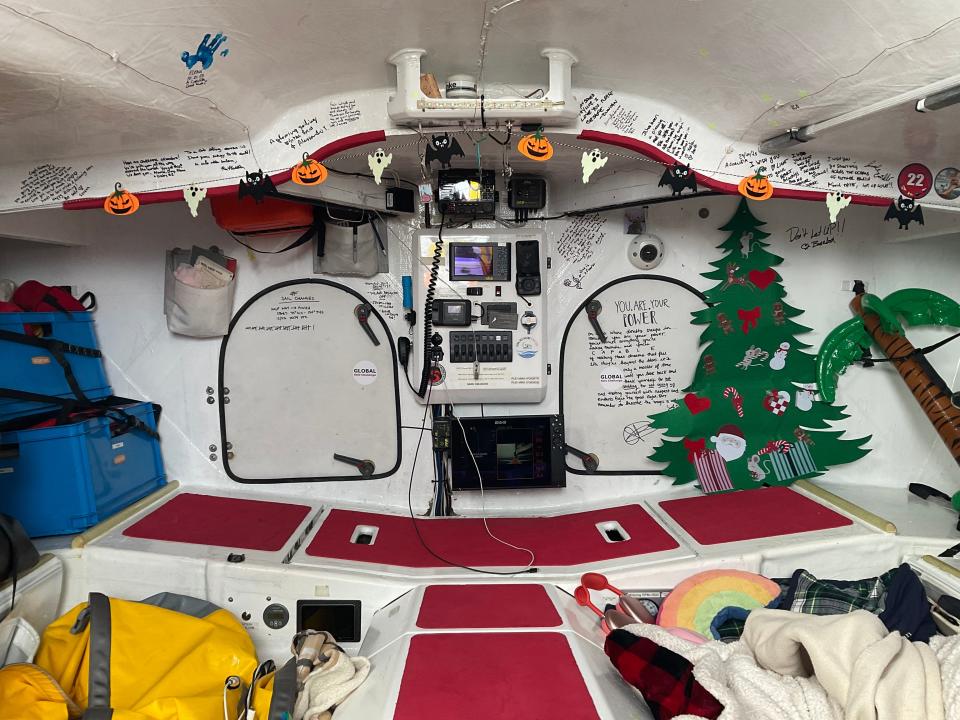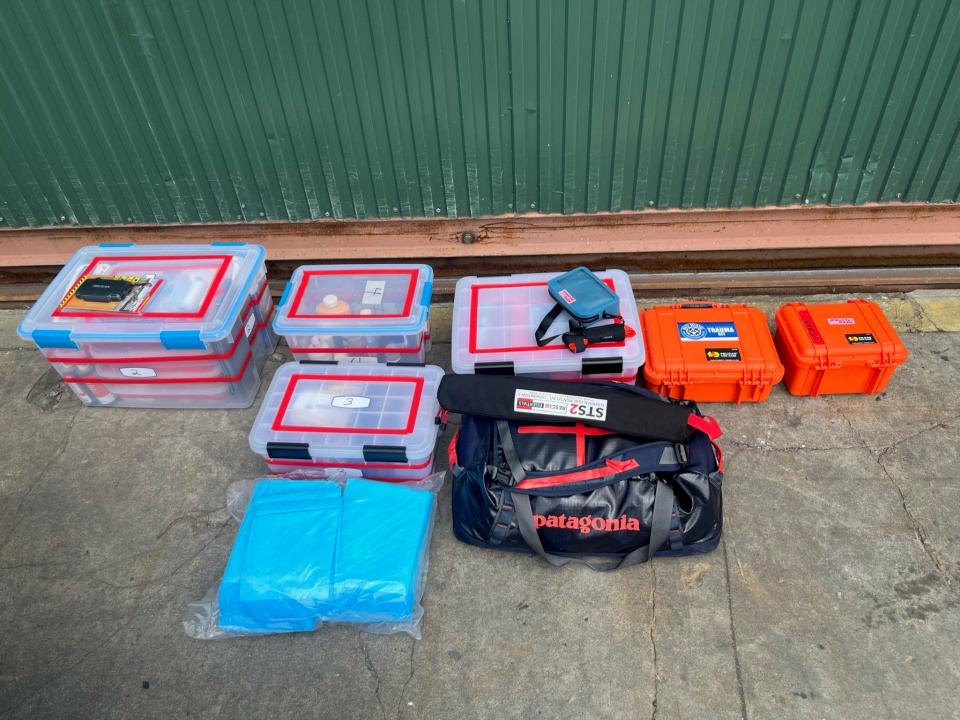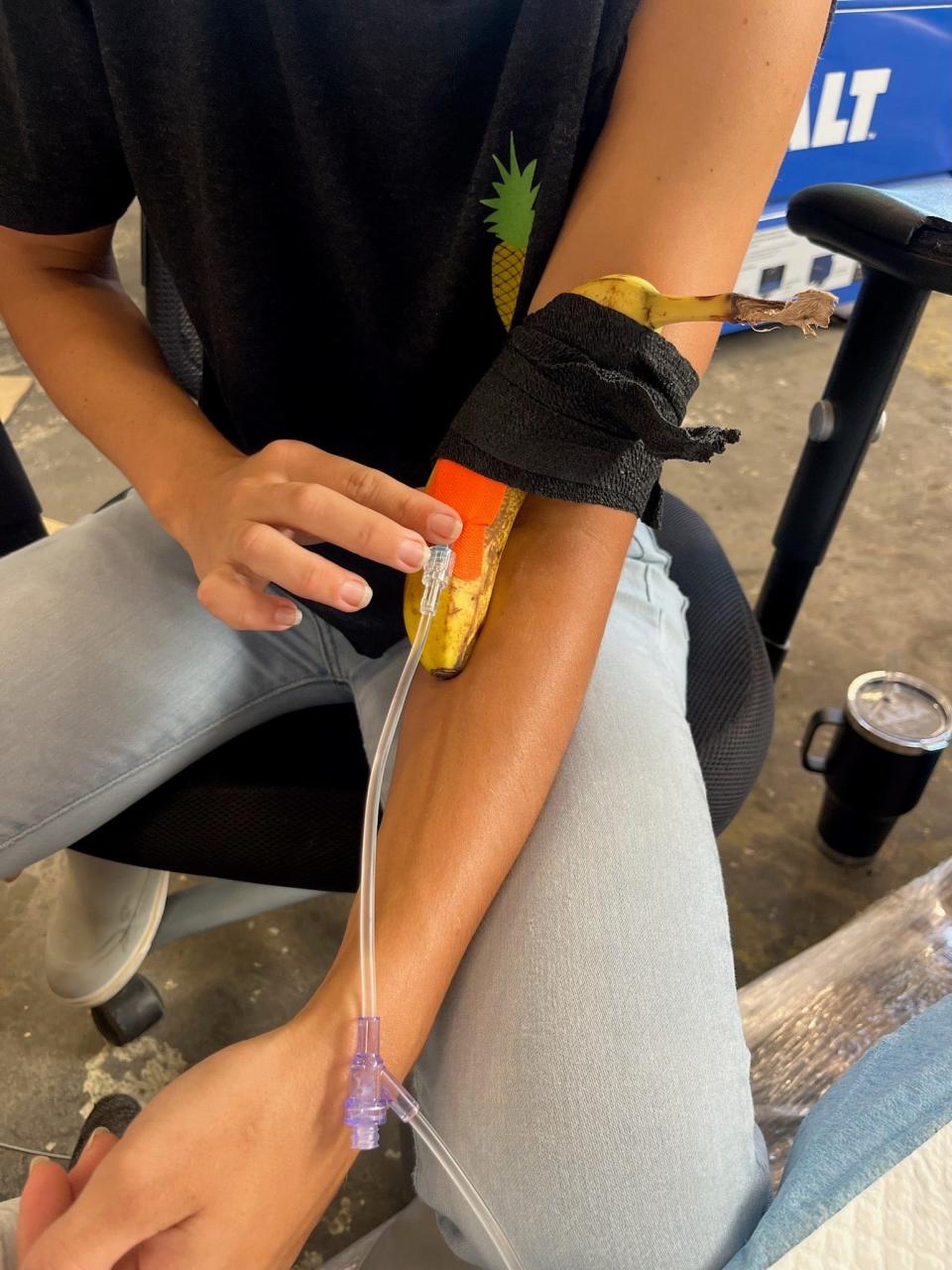After sailing around the world, Cole Brauer says she's more grounded than ever
Cole Brauer's adventure put her in the history books and in the heart of the most isolated and dangerous places on Earth. Not to mention Instagram.
The southern oceans of the Atlantic and Pacific that Brauer endured alone in her 30,000-mile sailboat voyage brought her face-to-face with bigger waves and storms than most people will ever see."It's like going to Mars and hoping that you can breathe," says Brauer, who became the first American woman this month to sail solo nonstop around the globe. "It's not made for humans."
She's now a seafaring celebrity who has been deluged with more questions about aquatic travel and surviving the dangers of the deep than Jules Verne and Jacques Cousteau. That's because Brauer's social media followers now total half a million, and many are asking about her journey and how she did it.
"With this newfound fame, I want to keep my feet on the ground," says the 29-year-old from Long Island. She's looking to chart a new course in the sailing industry, which has historically been a bastion of elitism and exclusivity, she said.

Brauer used Starlink − the low-orbit satellite network owned by tech billionaire Elon Musk − to get an internet signal on her voyage so that she could talk to her team, FaceTime with her mother and post videos to Instagram from her 40-foot Class40 sailboat, First Light.
She departed from A Coruña, Spain, on Oct. 29 and was at sea for 130 days. She competed against 15 male sailors, eight of whom had to drop out. Sailors set off at staggered times, depending on the speed of their boat. Brauer finished second in the race, behind France's Phillipe Delamare.
"Cole put in a tremendous effort to achieve a tremendous result," said Marco Nannini, who organized the Global Solo Challenge race.

Treacherous conditions in the Southern Hemisphere
Because the race took Brauer around the world, she had to endure scorching temperatures near the equator and near-freezing cold in the globe's southern oceans − where waters are more choppy and dangerous to sail, she said.
"I always had respect for the ocean, but this was an absolute different level," Brauer said. "It's beautiful. It's uninhabited. It's just untouched by humans."
Stronger winds and underwater currents in the Indian, South Atlantic and Pacific oceans often react to form bigger waves and "crazy storms," Brauer said, making those areas "some of the most dangerous places to be on the planet."

Unlike the part of the Atlantic Ocean stretching between North America and Europe, the southern oceans have a lot less traffic, Brauer said. During the two months she sailed there, she said, she saw only one other boat. The weather was colder and grayer, and the nights were much shorter.
The scariest moment came about two weeks from the end of race, when over just a couple days a fellow competitor had to abandon his ship because it started to sink and another had to do the same after his boat lost its mast.
It caused Brauer to feel paranoid, she said, even imagining noises coming from her own boat, which was also going through normal wear and tear.
"I just felt like, 'Oh my gosh, what's going to break next?'" she said. "Is the boat going to break in half?"

Alone in the middle of the ocean, Brauer felt homesickness, then zen
Brauer made it all the way around the world the same way any sailor goes from one point to another: staying out of direct wind and tacking from one direction to the next until she finally got to the finish line.
"You want to go straight, but you can't," she said. "You can't sail directly into the breeze; you have to tack back and forth at a 45-degree angle. I went around the world tacking, and jibing, and eventually you make it there − but there's a lot of twists and turns."
Brauer also had to constantly check the weather and change sails while also maintaining the boat.
"Everything has the possibility of breaking," Brauer said.
Brauer slept on a pile of bedding on the boat's floor for two to four hours at a time. She boiled water and used a warm wash cloth to bathe, she said. She packed 160 days' worth of freeze-dried food, including a peaches and cream oats mix that became her favorite.
Despite the technical challenges of sailing around the world, homesickness was by far the biggest challenge, she said. In Spain, before she set off on the race, nightly family-style dinners with teammates and group outings in A Coruña created intense personal bonds that she longed for on the ocean.
"All of a sudden I had a family of like 12, and you get very used to being surrounded by all these boisterous and loud people," she said.
But then, something clicked one evening when Brauer was in the boat's bow watching the colors of the sunset bleed through a massive sail.
"My body and my mind finally got used to being out there and and knowing that this was like where I was supposed to be," she said.
Brauer said she saw dolphins, sea turtles, plenty of fish and even a whale as big as her boat.
"It's just so magical," she said.
Pitch-black night skies were another highlight, Brauer said, especially when she was sailing through hot areas and the darkness brought cooler temperatures.
Brauer documented every moment on Instagram
Brauer shared details of her journey with tens of thousands of followers on Instagram. At the start of the race, her Instagram account had 10,000 followers and now boasts nearly 500,000.
Creating and posting more than 150 original videos from the boat allowed Brauer to stay connected with other people even when she was in the middle of the ocean.
Many of Brauer's videos showed her raw emotions up close, like in one post from early in the race when she angrily vents about the moment she realized she'd have to fix several boat parts on her own.
"Right now I've been feeling just broken," she says in the video.
That vulnerability is what's allowing Brauer to chart a new course in the sailing industry, she said.
"I've shown a good piece of me. I've put my heart and soul out there and I think a lot of people are really afraid to do that," she told USA TODAY. "If you want to judge me for changing or molding myself a different way, you don't have to follow me."
Race win was a team effort
Brauer surrounded herself with a team of sailors and experts who helped guide her from ashore. There were medical staff, a weather router, an expert rigger, an electronic systems manager, a sailmaker and many other team members.
Next, Brauer and her behind-the-scenes team are preparing for the Vendée Globe in 2028, another around-the-world race with stricter rules and a bigger cash prize. She won 5,000 euros (about $5,430) for finishing second in the Global Solo Challenge.
That race will be far more difficult, Brauer said, because the sailors have to race on their own and cannot receive any verbal assistance from their teammates on land.
Almost two weeks since reaching dry land, Brauer said, she now craves being out on the ocean more than ever and even feels a sense of pain when she's not able to see the water or look up to see a sky covered in white, fluffy clouds.
"The fear used to be about the boat, when I was on the boat. Now the fear is not being out there," she said. "I'm not afraid of the ocean − I'm afraid of not being on the ocean."
As for her goal of sailing around the world?
"I did everything that it took to get here, and now I can bask in it. I made the biggest dream that I could possibly think of doing and then did it."
This article originally appeared on USA TODAY: Cole Brauer looks back after sailing world in Global Solo Challenge


